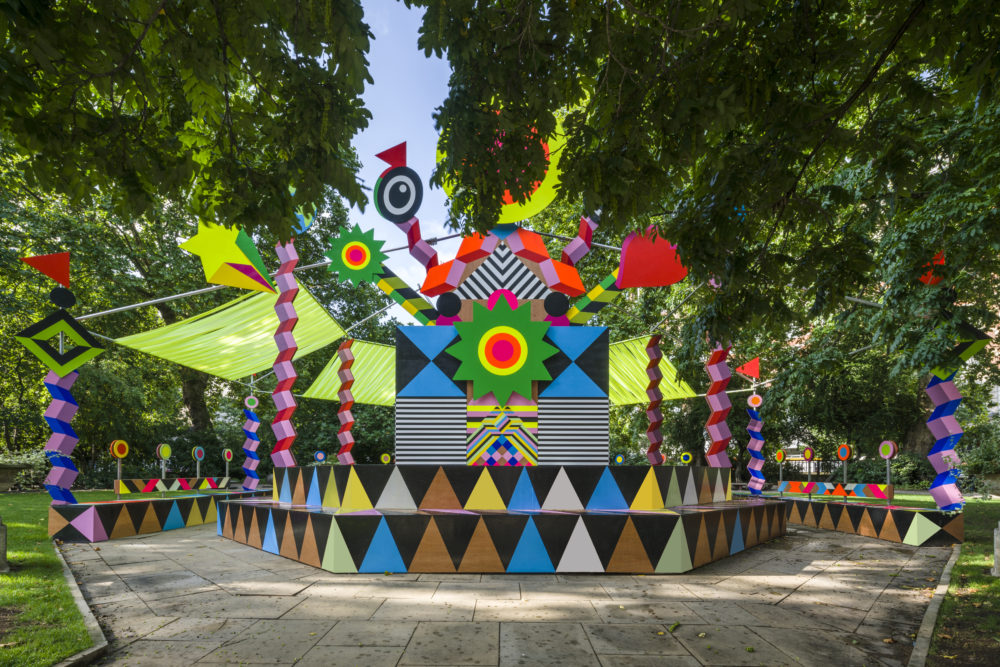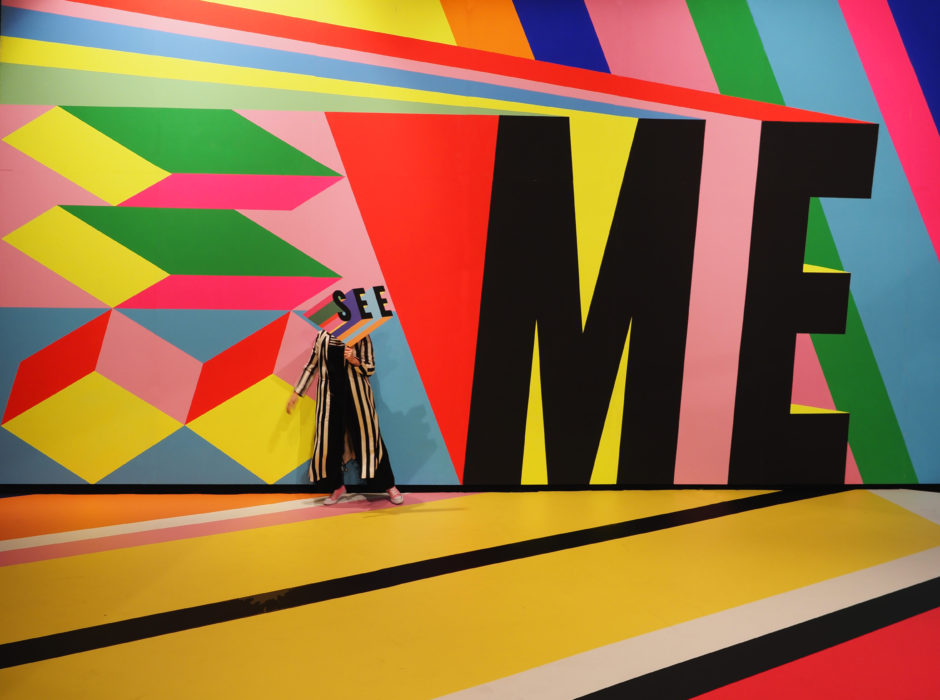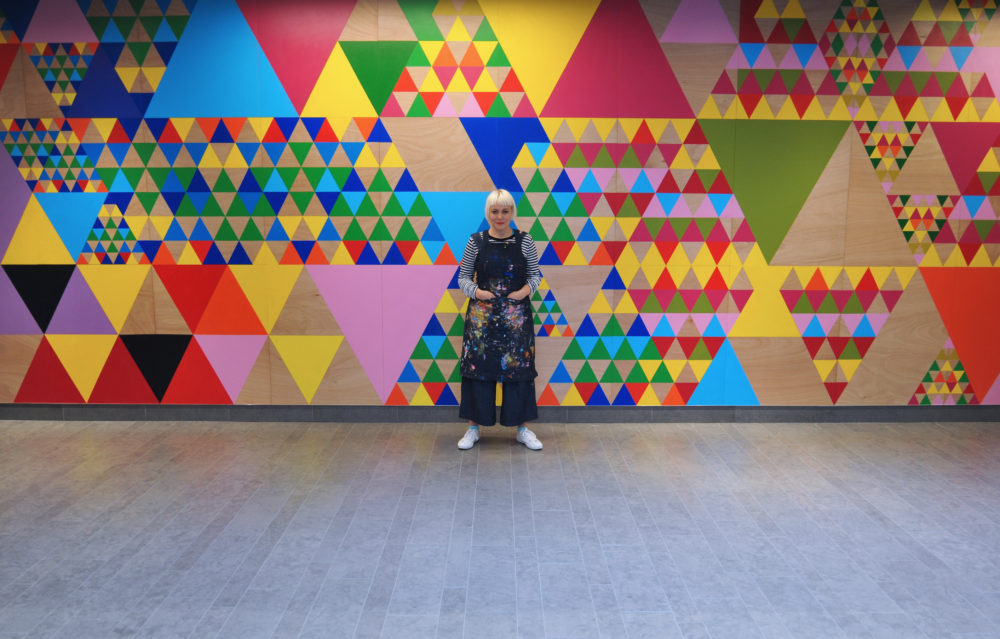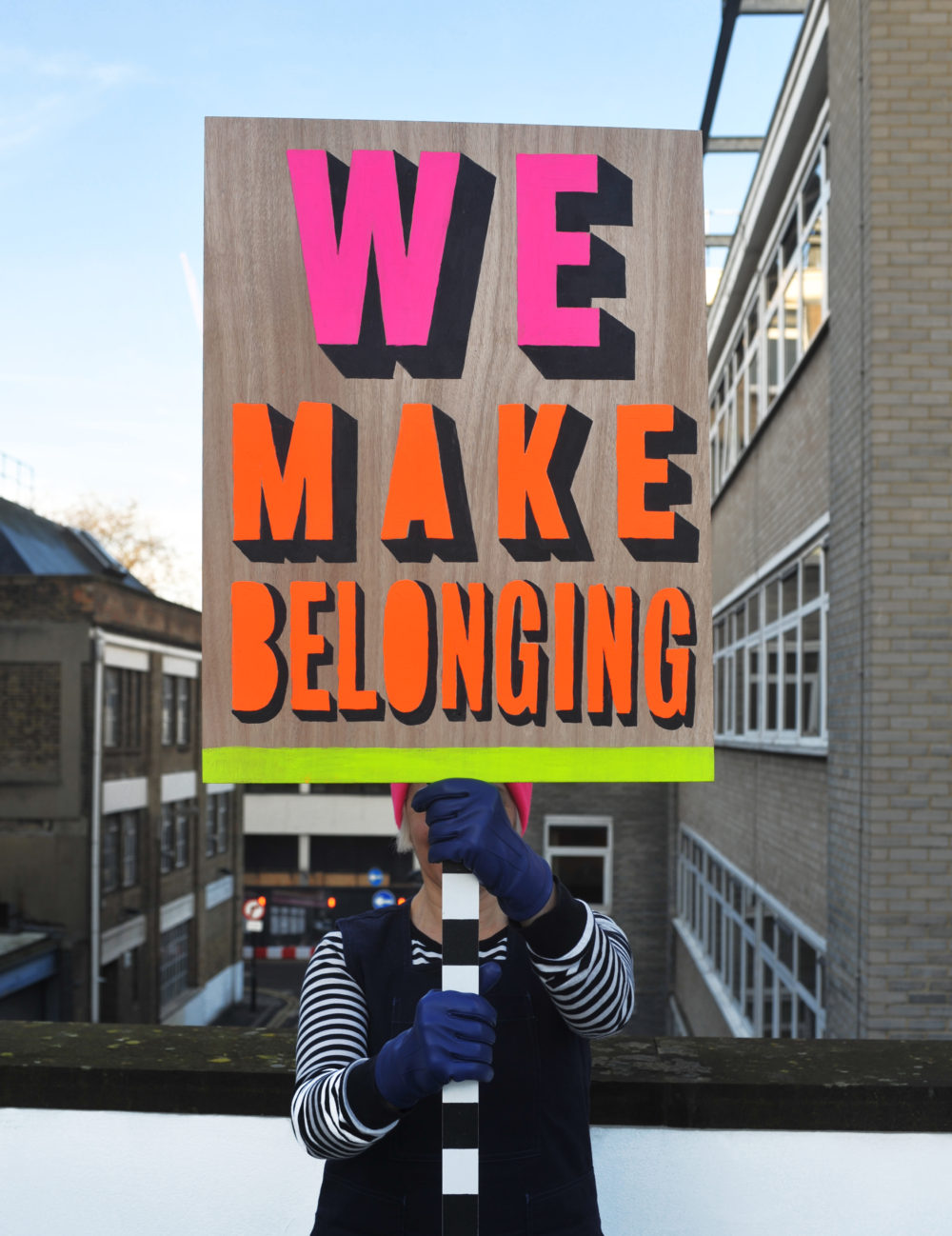MORAG MYERSCOUGH: A RIOT OF COLOUR
The bold and colourful art of Morag Myserscough is a riot of colour. Her distinctive style has brightened up everything from concrete structures and music festivals to hospitals and schools. Not one to shy away from a clash of neon her beautifully aesthetic stripes and shapes have been used to speak to and build stronger communities, help patients recover quicker and pupils gain better grades.
Who or what are your biggest influences?
The every day and the environments I experience. Embracing the unknown. Always discovering, always looking until I start seeing. Life.
Today’s design community faces a wealth of difficult issues. How do you rise to the challenge of creating a more positive future?
My mission is to make work that people connect with, that means something to them, that starts to help build stronger communities and a strong sense of belonging. My work has many layers; if it just makes people smile that is OK, but if people can spend the time, they will be able to start seeing more. Or people may connect their own narratives or stories to the work. We have a responsibility, we must be accountable for our work and we should address and discuss and try to bring people together.
What do you believe the responsibility of an artist and designer is when it comes to the local community?
The world is in turmoil and in a time of massive change and extreme inequalities. People do not want to be told how to live, there is no ‘one way’. It is important to work with each community group individually. It is not about assuming what people want, it is about understanding the individual needs and to see if you can be useful and assist with making their vision a reality, to work together to collaborate. It is important for the communities you work with that you prove yourself and people trust you, you listen and then respond, and hopefully make a piece of work that collectively you never imagined was possible. This can also start a massive change.
I recently completed 48 bedrooms in Sheffield Children’s Hospital. I wanted to make rooms that worked for all ages of patients and families. Sometimes the young people were in the hospital for long periods so the space needed to feel warm, like home. At first, my artwork was rejected as the clinical staff thought that the proposals were too wild and would visually disturb the young patients. I listened but also thought it might be the way I presented them on a screen (it is difficult to visually jump from an image on a screen to a 3D space). So I made 4 x scale models of the bedrooms and sent them to the hospital. The arts commissioner did a survey with the patients and the clinical staff and this time 92% wanted the bedroom designs. The bedrooms were put into production and are now being used and already patients are recovering quicker and the staff, patients and families are much happier. I could not ask for a better result.
You are from a circus family. Has this been an influence on your use of colour and shape?
My English great grandfather was a clown and my German great grandmother a high diver in the French circus, and another great French grandfather was a salon painter in Paris. My grandfather was a violinist and my French grandmother a milliner. My father a viola player, my uncle a violinist and my Scottish mother a textile artist. I was brought up in a bohemian family surrounded by performance and making. I feel being introduced to so much creativity when I was a small child, and throughout my upbringing, rubbed off on me. My home was full of music, colour and laughter. I grew up in a very grey part of London (Holloway) so I was always super excited when the funfair came to town in the holidays. I have loved the magical transformation the traveling circuses and funfairs can have on a place; one minute they are there and then they have disappeared.
How do you choose which projects to take on?
Often people contact me after either meeting me, listening to me talk or seeing the work in the press. I consider very carefully the projects I take on. The project needs to connect with me or I am unable to do it.
This year I designed a limited edition packaging for Method eco cleaning products, and when I agreed to the project, I negotiated they would give me a good sum of money to build the courtyard garden at the Sheffield Children’s Hospital which would not have been possible without their help.

You’ve collaborated on some of your projects with architects. What are the benefits of working this way?
My main collaboration has been with the architects Allford Hall Monaghan Morris (from 2007—2014) we worked on nine new Academy’s and Schools together. We would collaborate with everybody involved and aim to make schools that people felt they are part of and belonged to them. The schools have proven to be very successful and the student’s grades have improved yearly. Seven years later, the last school in 2015, Burntwood School, won the RIBA Stirling Award for Architecture. Our schools are often used as an exemplar.
Why did you choose this route as opposed to exhibiting in a gallery environment?
Outside is a free gallery for everybody. You do not have to decide to go in, you can just come across it. You can like it you can hate it but I would be sad if you were indifferent towards it. I love when my work is in brutal harsh environments, the contrast and materiality excite me. When people question how bright and colourful my work is I respond by saying ‘think about how wonderful colourful and joyful flowers are when suddenly they are in bloom’.
For more information about the bold and colourful art of Morag Mysercough see studiomyerscough.com









